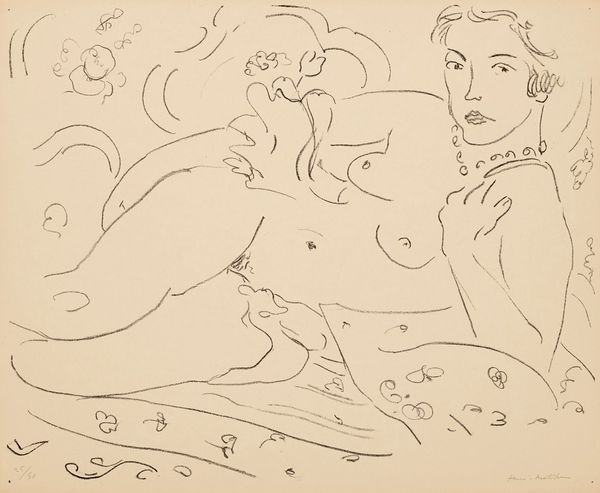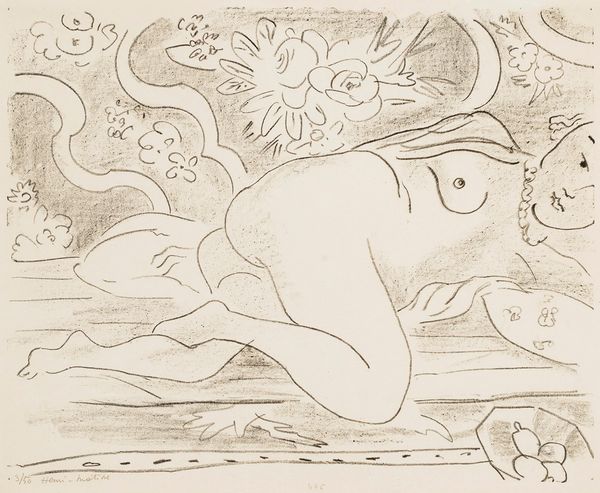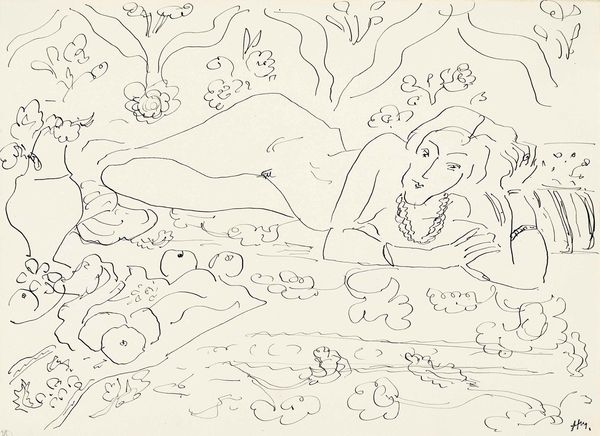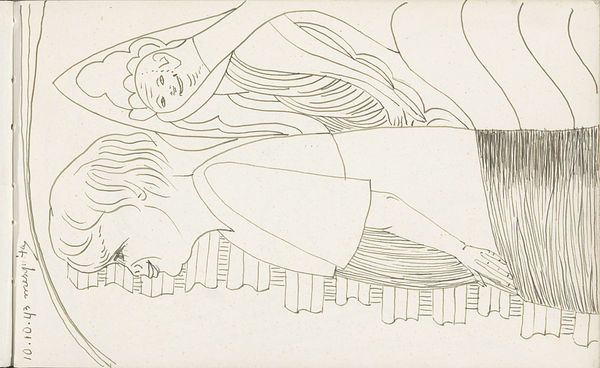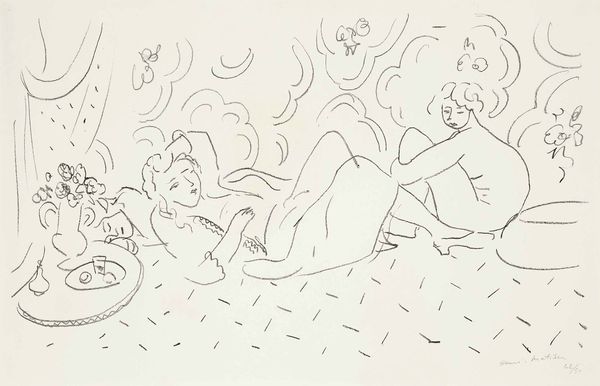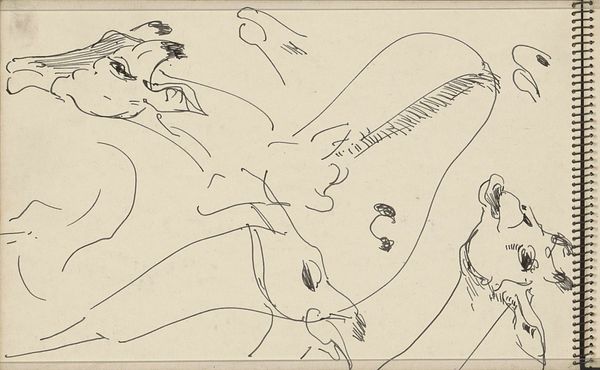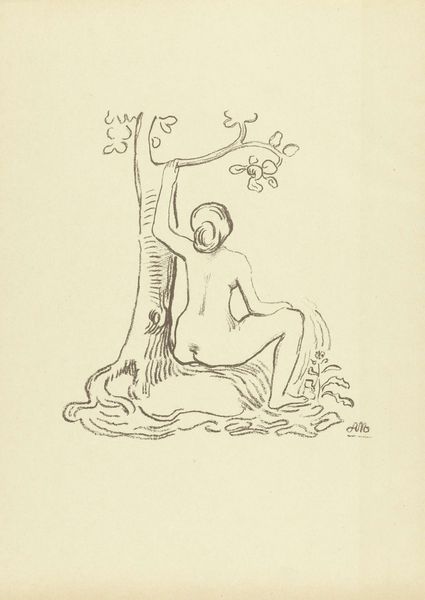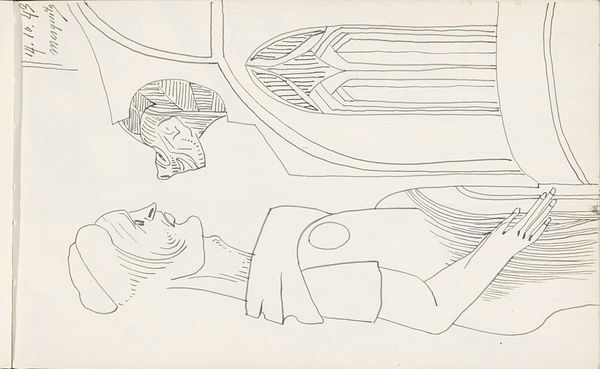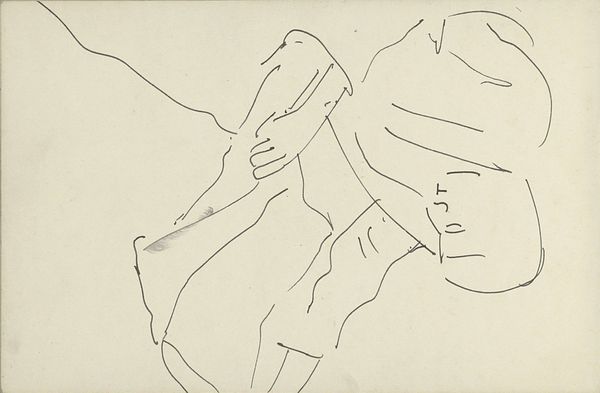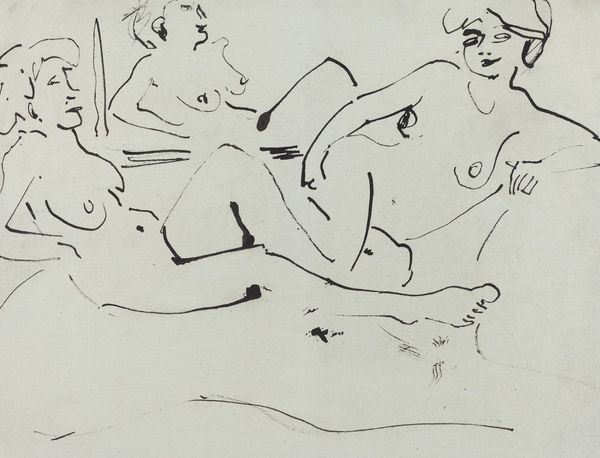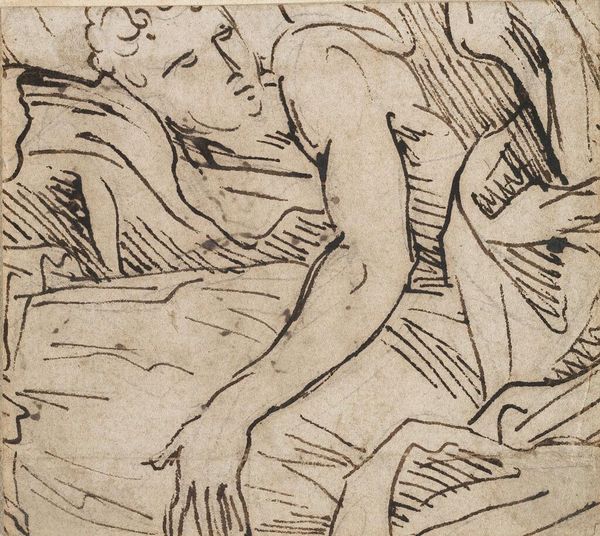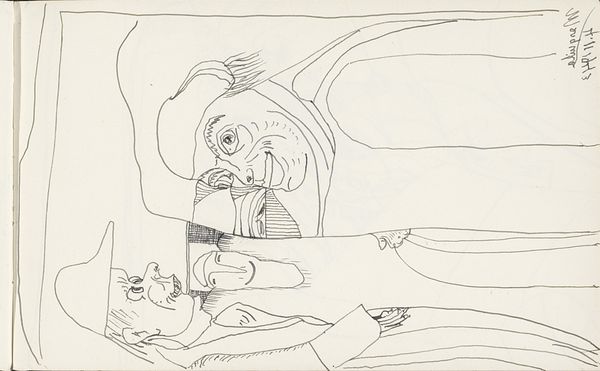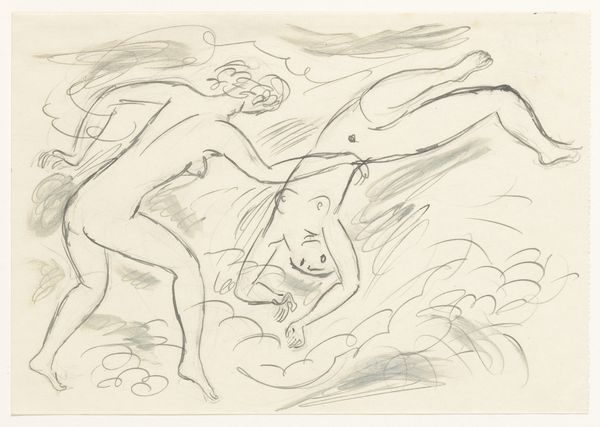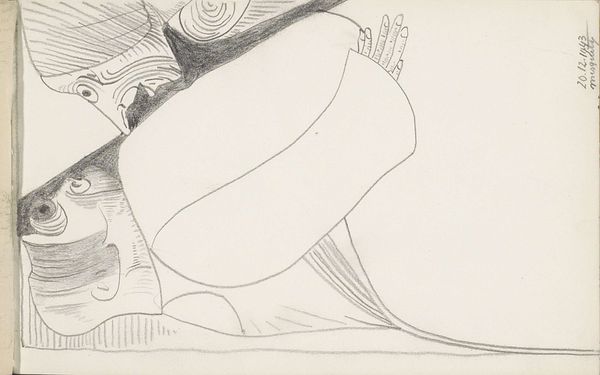
Copyright: Modern Artists: Artvee
Curator: Up next, we have Henri Matisse’s 1927 drawing, “Odalisque,” rendered in ink on paper. Editor: My first impression is one of incredible lightness and freedom. The lines are so sparse, so confident, yet they evoke a sense of lush, almost dreamlike abundance. Curator: Indeed. Matisse was deeply interested in portraying the female form in a way that broke with traditional academic constraints. This piece reflects a broader cultural fascination with the "Orient" in the early 20th century, though the portrayal, of course, needs careful interrogation given its historical context. The 'odalisque' figure itself has a complicated history. Editor: The figure seems surrounded by a personal iconography. Those floating floral and cloud-like forms, are they purely decorative, or do they have a deeper resonance, perhaps reflecting elements of fantasy or memory that were becoming visible in French culture through Proust, surrealism, and early film? Curator: Exactly, while Matisse claimed he was simply interested in aesthetic harmony, it’s vital to recognize how these aesthetic choices reflect the political and social dynamics of his time, where women—especially women of color—were often exoticized and objectified within artistic representations, particularly in relation to post-colonial power structures. Editor: Thinking about art history beyond Matisse, odalisque figures reach back centuries. He may have had in mind other figures and places while he made this figure. The simple lines, that directness—there's an almost hieroglyphic quality to the drawing. The cat seems to echo that. Curator: I see that, particularly given the historical construction of Orientalism within European art and its role in constructing racialized and gendered stereotypes. It also speaks to the enduring legacy—and continuing critical debates—surrounding the power dynamics within such representations. Editor: For me, there is almost something both ephemeral and lasting about these lines and forms. I am struck with that tension more than ever after we contextualized it through social narrative. Curator: A balance between aesthetic appreciation and critical engagement—perhaps that's key to understanding such works responsibly.
Comments
No comments
Be the first to comment and join the conversation on the ultimate creative platform.
